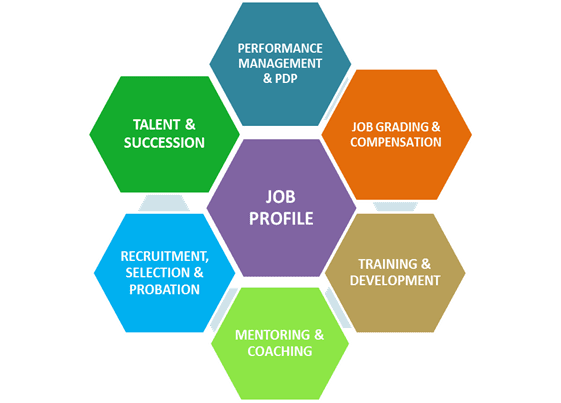The Role Profile is designed to be used in conjunction with the Higher Education Role Analysis (HERA) job evaluation scheme, and the HERA Support Tool is designed to ensure that Departments cover the HERA scheme when writing a Role Profile.

The role description is used for a variety of purposes, including grading new posts, updating role descriptions generally, and as the baseline for a variety of HR related matters, including recruitment and performance-related issues.
It is important to note that a Role Profile is used specifically to grade a role and not the holder of that role.
The following sections of the Role Profile are designed to be enable departments to copy/ paste relevant information into the Further Information template (HR7) to provide applicants for the post with all the information they should need to make a decision on whether to apply.
-> Role Overview
-> Main Duties and Responsibilities
-> Person Specification
General guidance on completing the role profile
The Role Profile should be used to describe the tasks and duties that make up the role. It is important that it gives an accurate impression of the purpose of the job and what the role holder will be expected to achieve so that:
->> The most suitable applicants are encouraged to apply for your vacancy;
->> The person appointed to the role understands what is expected of him/her and there is a framework for discussing his/her performance, including during probation.
When developing the Main Duties and Responsibilities section you:
Do
Give an accurate impression of what the job involves, taking care not to over or understate the duties.
Focus on objectives, outputs or expected results rather than the specific tasks undertaken to achieve these
Define each duty and responsibility as a statement of what the role holder is expected to achieve (i.e. outcome) by:
Start the sentence with the action (e.g. plan, prepare, produce, provide, maintain, analyse, test etc. then
Describing the activity to which the action is applied (e.g. test new systems, analyse financial data); then
Stating briefly the purpose of the activity in terms of outputs or standards to be achieved (e.g. test new systems to enable them to meet the agreed systems specification; analyse financial data using Excel spreadsheets to show departmental expenditure on a monthly basis).
Review the expectations of the role alongside other roles within the team (check for clarity in levels of responsibility, control etc).
Don’t
Using too many duties, between 6 and 10 should be sufficient for the majority of roles.
Words like ‘assist’, ‘help’, ‘ensure’, ‘manage’, ‘work with’, etc, unless they are qualified by how the activity is done);
Detailing the way that a specific task or activity is to be carried out (this can make the description overly prescriptive)
Basing the duties on the previous occupant, when a role is vacant ensure that description supports the requirements of the role to be undertaken, not necessarily on the tasks the previous individual undertook.
Using jargon, acronyms (unless also spelt out), or making reference to specific systems/ equipment (unless previous experience is an essential requirement– this should be listed as such in the person specification).

 Follow
Follow